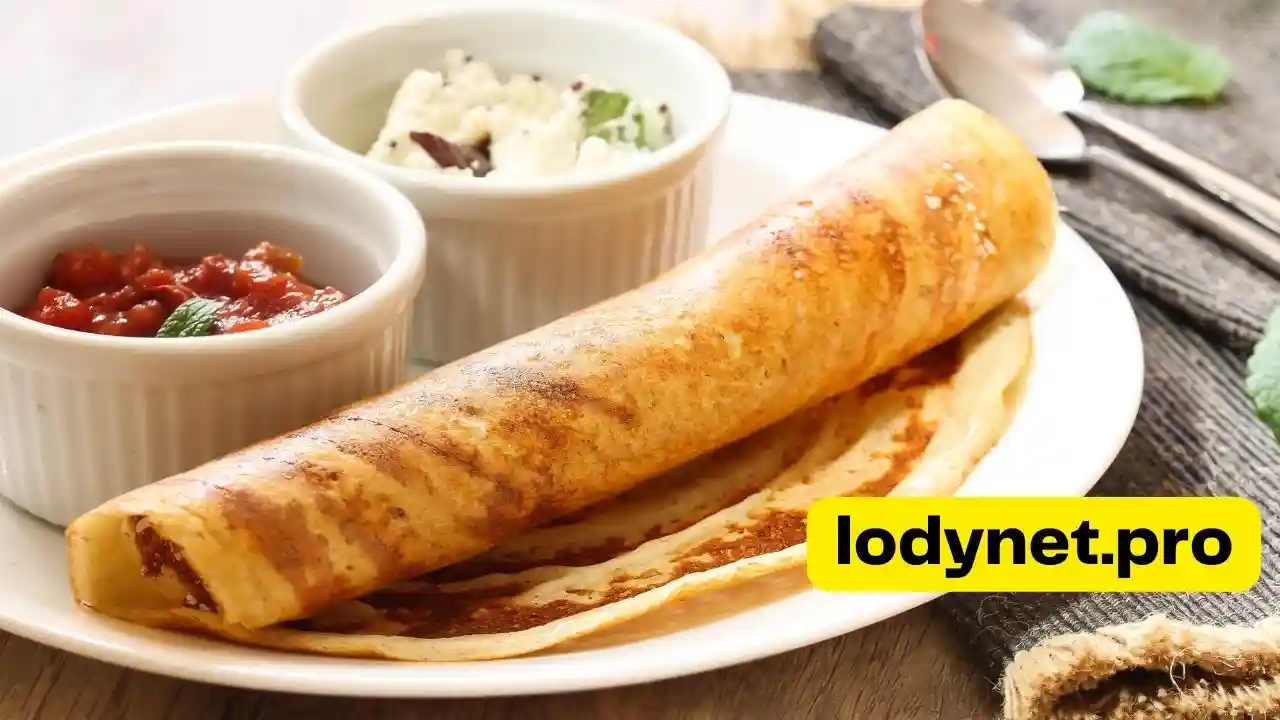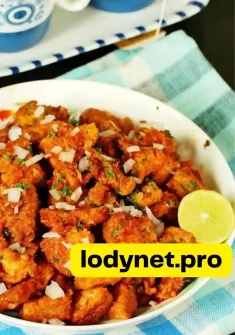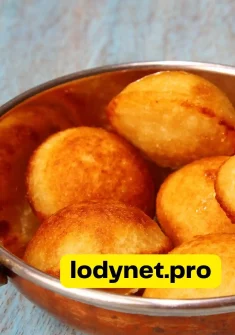Dosa Recipe Learn to make Dosa Batter at home. This comprehensive blog will show you how to prepare dosas in all varieties that are crispy, soft, food-style, homemade, and nutritious dosas. Whatever your level of cooking, whether new or experienced, these tips and tricks in this article will assist in mastering the methods for making the finest South Indian Dosa.

What is Dosa?
Dosa is a popular South Indian thin crepe made using fermented rice and lentil batter. The history of Dosa reveals that they were originally made from only rice. Still, as development time, people began adding black or urad lentils for texture and flavor.
Dosas gained popularity with the rise of Udupi-style restaurants that serve only the finest dosas – plain, masala, and set Dosa. Dosa is made by souring black lent (urad dal) and rice into a batter. The batter that has been fermented is then spread out like crepes on a hot grill or tawa.
Is Dosa Healthy?
Yes, Dosa is a healthy high, protein breakfast. Urad dal is rich in calcium and protein. It’s a fantastic breakfast for a good start to our day.
It is one of the most valuable food items for health that nourish our bodies. Therefore, I strive to reduce the amount of urad dal and rice as low as possible or only when necessary, without losing its taste or crispness.
Dosas and Idlis are prepared frequently in my house to serve for breakfast or sometimes as a dinner option. One can get a wide variety of dosas on a tiffin plate or on a fast food outlet menu.
Dosas are made using numerous proportions of rice and daal. Here are four recipes on this page that I use. It is possible to try any of the dosa recipes listed to fit your preferences or diet requirements.
Blender or a Wet Grinder – Which is Better?
I don’t use a wet grinder even though I do have one, as I don’t like the lifting and cleaning of the stone. In the past, we would receive frequent visitors from India and have to prepare batter at least once every week.
It’s worth it to use and own the wet grinder when you’re hosting many guests in your home and eat idli Dosa often. Since 2006, I’ve been happy with my mixer (blender), although we’re four people and cook dosas on average three times each week.
The batter is very easy to rise even when ground in a mixer if it is reliable and doesn’t let your batter get warm during grinding.
In this post, I’ve discussed making batter using a wet grinding machine and a blender. The proportions I have shared in this post on dosa recipes can be used even when making batter using a wet mill.
Which Kind of Rice Is Suitable for Dosa?
There are numerous varieties of rice in the marketplace. The recipes on this page have been made using Idli rice and raw rice, and rice cooked in parboiled. However, you’ll get the most results when you use uncooked rice—a mix of raw and parboiled rice yields positive outcomes.
The outcomes of parboiled rice will sometimes be different. It is mostly dependent on the circumstances of the weather.
Be aware that parboiled rice is inedible. Short-grain rice such as ponni and sona masuri has worked well for me.
Also, you’ll need to be able to play around to determine which rice will work best for you.
When to Add Salt?
How do you sprinkle Salt on dosa batter? When you grind, either before fermentation or following fermentation, is among the most frequently asked questions.
You will need to test and see which ones work best for you. This is because it depends on weather conditions and the amount of water mixture. Batter.
In cooler or cold regions, the batter can take long hours to ferment without adding non-iodized Salt. After a prolonged period of storage, the batter could smell.
To avoid the odor, it’s a good idea to include non-iodized Salts, such as sea salt or rock salt, before fermentation. Salts like these aid in speedy fermentation.
However, in areas with high temperatures and during the hot summer months, it’s best to add Salt before making dosas, i.e., at the time of fermentation, or else the batter will turn stinky and sour.
In India, many people sprinkle Salt on their food after fermentation, except in cooler areas like Bangalore. In terms of taste, there’s an important difference between adding Salt before and following. Try it out and see what’s best for your taste.
Beware of iodized Salt at all costs If you’re adding the Salt before fermentation, as it stops the batter from being fermented.
Recipe 1 – Crispy Dosa Recipe
This recipe produces one of the most delicious brown and crispy dosas. The batter is able for masala dosas, crisp plain dosas, masala paniyaram, and uttapam. Sweet paniyaram. This recipe is what I use to the greatest extent for my usual breakfast.

This masala Dosa shown in the picture above can be made with this recipe. It is served with any Chutney, potato masala, and Tiffin Sambar.
The majority of proportions give the color of Dosa that ranges from brown to red, only made using a cast iron tawa. However, this recipe makes brown and crisp dosas even when cooked using nonstick.
How To Make Dosa Batter (Stepwise Photos)
Soaking lentils & rice
Recipe 1
- Include 1/2 cup of urad dal (skinned whole black lentils), 2, 2 tablespoons of chana dal (Bengal grams), and 1 teaspoon of methi seeds in an enormous pot.
- Rice 1 1/2 cups into a separate saucepan.
- Then rinse the dals several times, then soak them in lots of water for four hours. They could be bathed for 6 hours or an entire night in colder weather.
- Rinse the rice several times until the water is clean. Incubate for four hours. Similar to this in colder weather. They could be submerged for as long as 6 hours or the duration of a night.
- 30 minutes before mixing the batter. Rinse, then soak two tablespoons of poha in 1/4 cup water for 30 minutes.
Making batter
- Pour the poha soaked into the container or grinder first. Remove the excess water from the dals, then add them to the grinder with 1/2 teaspoon of non-iodized sodium and 3/4 cup of water.
Also, you can remove Salt in summer and add it in the morning as you prepare to make dosas. The batter will continue to ferment even without Salt. Salt is what I prefer to use when I grind the dal. Otherwise, my batter will not ferment properly.
- Blend until smooth and frothy and bubbly. If necessary, add additional water. I would add 2 or 4 tablespoons of water. However, make sure to create a thin or sloppy. The batter must be thick, not too thick, or have a pouring consistency. (Check the video to see if it is consistent)
- Place the batter in a larger bowl or a pot. Remove the rice and transfer it to the blender container. Add 1/2 cup of water. I add two tbsps plus.
- Blend until you have a nice batter.
- Mix the rice batter with the batter for urad dal. Mix the two batters thoroughly with your hands. The warmth of your hand can aid in the process of fermentation. The batter you prepare has to be a consistency that is pouring; however, it should be thick, not runny.
If the batter is thick, pouring water in the beginning and mixing is possible. The thicker batter will not ferment as well. If it’s a bit loose, it’s good. (check the video to ensure uniformity)
If I make the recipe twice, I use 2 ceramic or glass pans for brewing and storing the batter for Dosa. I then divide the batter into two different containers. The not disturbed batter can be stored in the fridge for a long time without turning sour.
How do you ferment dosa batter?
- Then cover the pot, and let it ferment at a warm temperature to let the mix rise and become bubbly. If you reside in a warm area, leaving it out on the counter overnight is possible. It could take between 5-16 hours, depending upon the temperatures.
To allow the Dosa to ferment In colder areas, heat the oven to the lowest temperature (140 F or 60 C) for 10 minutes. Shut off the oven and leave the dosa batter with the lighting on. Also, you can use the Instant Pot to brew with the yogurt setting. Make sure to use an outer lid, not just the IP lid. I let my ferments sit for only 7-8 hours inside the oven and the IP.
- In making this batter, I needed to let it wait for 16 hours to ferment inside a sealed kitchen cabinet. If properly fermented, the batter rises and becomes lighter, airy, and full of bubbles and pores. The batter occupied about half the bowl before fermentation. It grew to about 3/4 of the bowl.
Fermentation test: To test if you are fermenting properly, put half a spoon of the batter in an empty bowl containing water. The batter that is fermented properly will rise and will not sink.
- This is a closer view of the batter following fermentation. To have a great fermentation, 4 elements are crucial: the quality of dal non-iodized salts, the temperature, and the uniformity in the mixture. There are more suggestions and tricks to make a successful fermentation in my soft Idliblog that I posted in the past.
- Avoid over-fermentation of the batter because it becomes sour and will not be suitable for spreading across the skillet. Here is an image of an over-fermented batter to give you a reference.
- After your dosa batter has been good to ferment, put it in your refrigerator.
How to make Dosa?
- The batter should be very thick following fermentation. Place the batter in the mixing bowl. Add a little water to create an easy-to-pour and spreadable consistency. (please look at the video to determine uniformity).
- Incorporate a small amount of oil into an oven or grill. Apply the oil using a kitchen cloth or cloth until the oil is completely absorbed. Be sure that there’s any excess oil in the skillet. Also, you can use a piece of onion to rub in the oil.
- The pan is heated to an extremely high temperature. It is possible to sprinkle a few drops of water and see the temperature to see if it’s prepared. It’ll immediately start to sizzle. Avoid putting water regularly over the tawa, which is hot and nonstick. It will destroy even the most durable Nonstick coating.
- Reduce the temperature to medium once the pan is heated enough. Ensure to stir the batter thoroughly in the bowl, then pour one ladle into the middle of the skillet.
- Start spreading evenly from the center and working in an arc in a counterclockwise direction to create the crepe thin.
Troubleshooting suggestion: If you are not able to make the batter spread because it remains stuck in the pan, that indicates that the oven is overheated or your batter may be heavy. The flame should be lowered, and then allow the pan to cool. If you aren’t successful, add a little liquid to your batter to maintain the proper consistency.
- Spread it around in circles from the center until you are at the edge.
- Adjust the temperature to high, and simmer for about a minute, then put butter or oil on the edges. The Dosa’s edges begin to separate from the pan and disappear from the pan after it is cooked.
- Turn it over and cook as you would like if it becomes golden brown or golden on the bottom. Dosas do not have to be cooked in the opposite direction, in case you want, you can cook it. When I prepared the masala dosa, I made potato masala filling. Dosas made of plain flour is typically eaten along with coconut Chutney.
Serve them immediately if it gets hot. They soften up as they cool.
Recipe 2
Soft idli & crispy dosa (2-in-1 batter)
The ratios produce crisp and soft dosas that can also be utilized to create soft idlis. Simply mixing the batter makes a difference. An extremely runny batter makes soft dosas. The batter should be moderately thick. However, it is spreadable to produce crisp dosas.
The same recipe can be utilized for masala dosa, paniyaram, uttapam and also soft Idli. The only differentiating factor from the previous recipe is the hue. The color will not change to dark or red like the first recipe, but they are golden.
If you want to prepare your dosa and idli batter in the same blender or in a wet grinder, this might be the right choice for you.
Ingredients
- 1/2 cup skinned whole in urad Dal
- 1 1/2 cups rice for blender – 2 cups for wet grinder
- 1/2 tsp methi seeds
- 2 tablespoons of poha (flattened rice) (substitute 1/4 teaspoon of methi seeds)
- Non-iodized Salt when necessary
Recipe 3
Restaurant-style crispy masala dosa
If you’ve ever wondered what makes dosas in restaurants or tiffin-style centers come out delicious, crispy, and tasty, You will need to make an extra effort and make this delicious Karnataka masala that is served in a restaurant dosa. The aroma is very pleasant and distinct.
Recipe 4
Sada dosa recipe
This batter may also be made into Idli if the quality of the urad dal you use is high. Older dal or dal from the old harvest will not work.
The ratios are good for crispy and soft dosas. Mixing the batter is important in this regard as well. A runny batter will yield soft dosas. The batter should be moderately thick. However, it is spreadable to will result in crispy dosas.
The batter could also be used for making idli paniyaram and Uttapam. The recipe for dosa batter requires only 3 ingredients
Ingredients
- 1 cup whole urad Dhal
- 1 1/2 cup rice
- Crystal salt or non-iodized Salt, if required
Recipe 5
Healthy plain dosa recipe
Healthful, high protein and high calcium dose. The food is made in many homes that are Telugu-speaking. Food suitable for everyone, from those suffering from illnesses, young children and infants over 9 months, and for the well-nourished.
Sometimes, I prepare this when my husband asks me to make it, as he enjoys the flavor. These are unique in flavor and taste, resulting from the Urad Dal. If you love this recipe, you should not find a better one.
The food should be eaten straight in the pan since it will turn slightly crisp and not as crisp as other recipes I’ve posted in this blog post.
It is highly recommended, especially if you have infants and children at your home (especially those who are underweight). It is also a good option for people looking for foods high in calcium and breastfeeding moms.
Ingredients
- Half a cup of whole urad dal
- 1 cup rice


